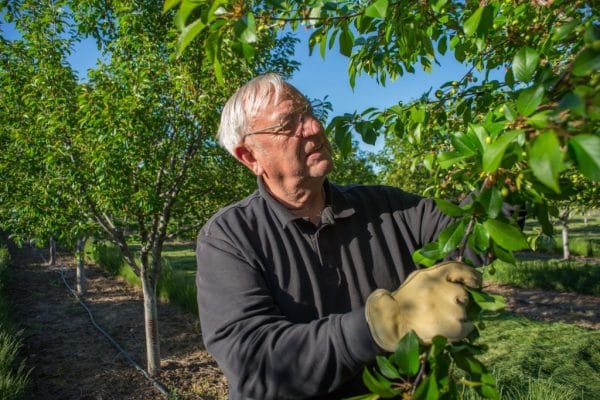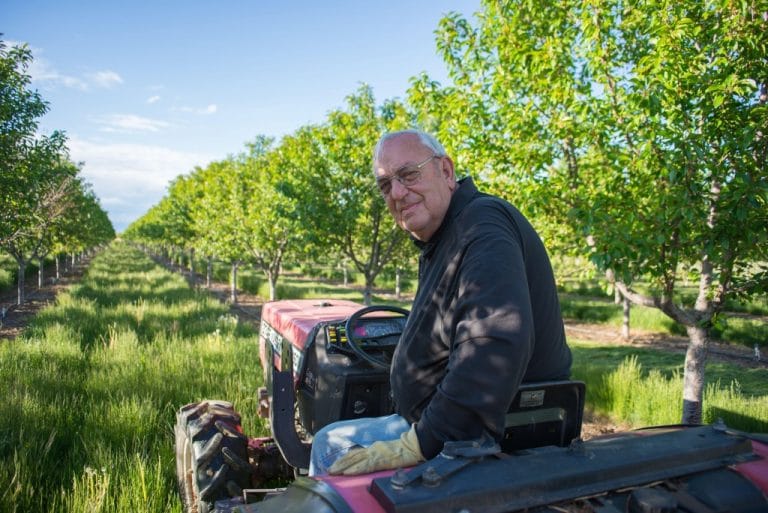Ferguson Fruit Orchard—As sweet cherry trees begin to produce fruit in late May and June, farmers across Utah are crossing their fingers that the sporadic spring frosts are finished for the year.
This is also the time of year when Bill James, owner of the 100-acre Ferguson Fruit Orchard in Santaquin for 44 years, takes stock of his own, slightly different crop:
Tart cherries
With a later blooming and growing season than their sweet cousins, the tart cherries Bill grows allow him to conduct preparations for harvest season before the trees bear any fruit.
“In late May we’re just now getting past bloom time and now in the process of applying sprays that nourish the trees,” he says.
However, this third-generation fruit grower knows better than to rest on his laurels.
His trees—the fruit of which is dried and used in trail mixes, granola, and other snack foods—are also in need of spring herbiciding.
The orchard’s irrigation systems and grass must also be maintained. Luckily, he has a steady, year-round worker base. “We’re basically a family operation,” Bill explains. “I have one gentleman who has been with us for about 30 years, plus two seasonal helpers.”
Bill has four daughters, three of which help during harvest time and two of which work for him year-round. Additionally, he has two sons-in-law who work at the fruit processing plant where harvested cherries are delivered.
“We’re involved in the whole process from growing to delivery of final product to consumers,” Bill says.

Extensive preparations
serve him and his crew when it comes time for harvesting. Starting around July 20, the unofficial harvest season start date, employees work round the clock to harvest fruit from 35,000 to 40,000 trees on Bill’s farm and on an adjacent farm in just three weeks’ time.
“It’s coordination of a lot of people running harvesting machines and removing the cherries from the orchard and taking them to a processing plant,” Bill explains. “We shake a tree every 20 seconds and can harvest 100 pounds or more of tart cherries per tree.”
With an annual cherry production rate of 3 million pounds and counting, it’s hard to imagine that Ferguson Fruit Orchard ever grew anything else. However, when Bill first purchased the farm in 1975, his focus was on apples.
“We packed apples 11 months out of the year,” he says. As the market changed over the years, Bill decided to remove all the apple trees and start fresh with tart cherries. “There are only 10 trees left of original apple crop,” he says.
Today, Bill is grateful for his success but also acknowledges the unique difficulties that come with farming in Utah. “I have farmed in the Columbia River basin area in Washington, as well as in Idaho, and it’s much more difficult here,” he says.
The main reason he cites is the rapid urban development of the Wasatch Front.
“The foothills are prime growing land, but they are also the most attractive to developers and homeowners, which drives the prices up and blocks farm expansion,” he adds.
While he acknowledges that he does not know what the future holds, he is optimistic about his farm and his family continuing to adapt.
Order produce from Ferguson Fruit Farm on the Payson Fruit Growers website https://www.paysonfruitgrowers.com/.






